Species S. indicum | ||
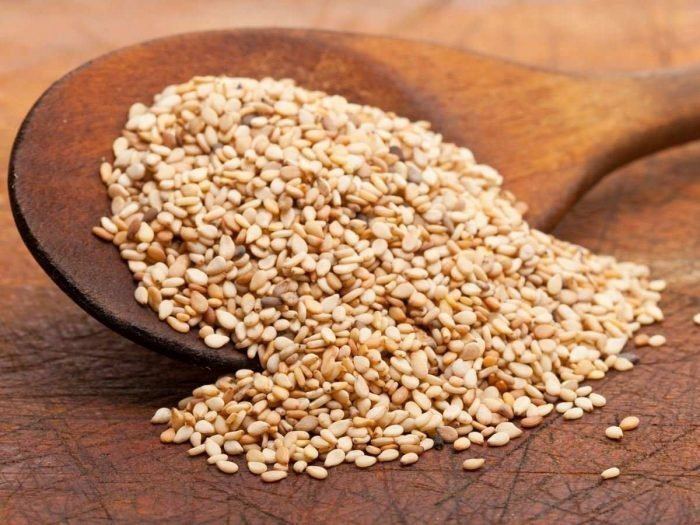 | ||
Similar Seed, tahini, Peanut, Ginger, Soybean | ||
Sesame seeds quick weight loss with sesame seeds dr shalini
Sesame (/ˈsɛsəmiː/; Sesamum indicum) is a flowering plant in the genus Sesamum, also called benne. Numerous wild relatives occur in Africa and a smaller number in India. It is widely naturalized in tropical regions around the world and is cultivated for its edible seeds, which grow in pods or "buns". The world harvested 4.2 million metric tonnes of sesame seeds in 2013, with India and China as the largest producers.
Contents
- Sesame seeds quick weight loss with sesame seeds dr shalini
- Sesame seeds health benefits
- Etymology and languages
- Origins
- Botany
- Cultivation
- Processing
- Production and trade
- Trade
- Nutritional information
- Chemical composition
- Cuisine
- Allergy
- Literature
- References
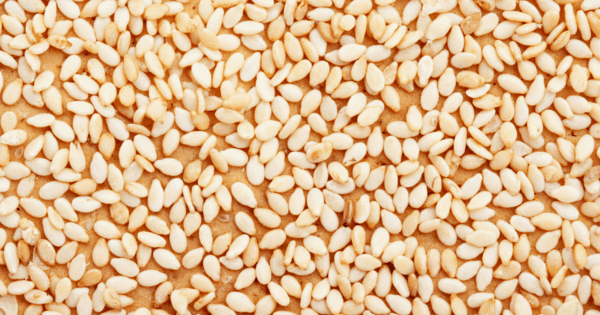
Sesame seed is one of the oldest oilseed crops known, domesticated well over 3000 years ago. Sesame has many species, most being wild and native to sub-Saharan Africa. Sesame indicum, the cultivated type, originated in India and is tolerant to drought-like conditions, growing where other crops fail.
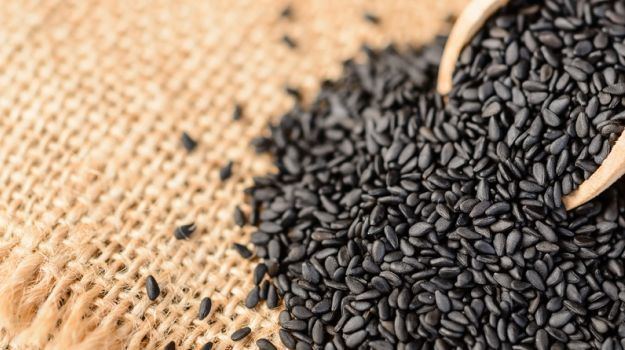
Sesame has one of the highest oil contents of any seed. With a rich, nutty flavor, it is a common ingredient in cuisines across the world. Like other nuts and foods, it can trigger allergic reactions in some people.
Sometimes sold with its seed coat removed (decorticated), this variety is often present on top of baked goods in many countries.
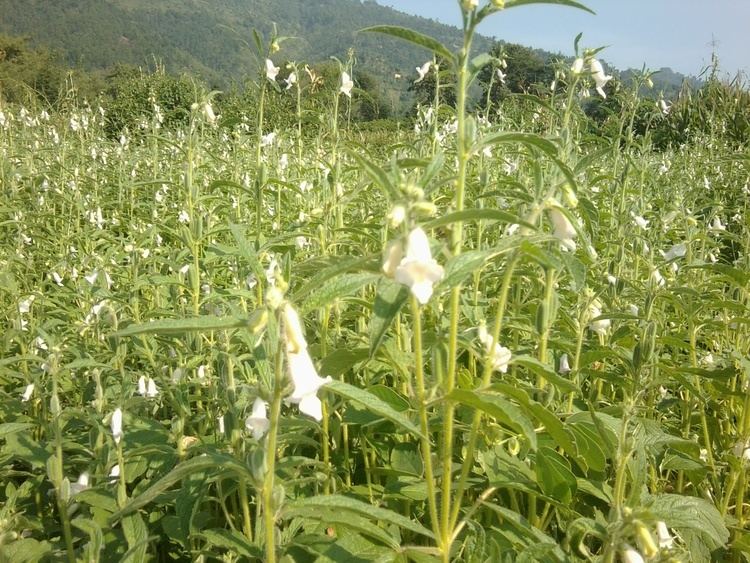
Sesame seeds health benefits
Etymology and languages
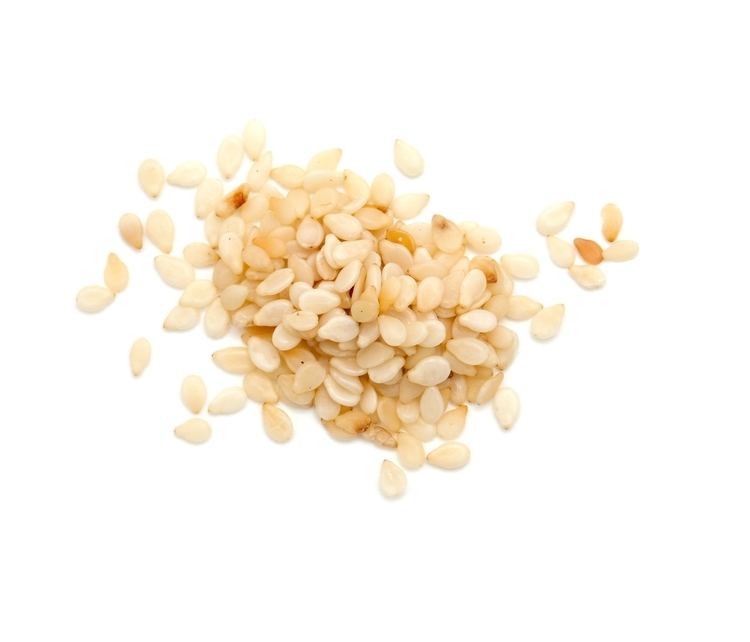
The word "sesame" is from Latin sesamum or Greek sēsamon; it also has derivation from Arabic semsem. From these roots, words with the generalized meaning “oil, liquid fat” were derived.
Sesame names vary among numerous languages.
Origins
Sesame seed is considered to be the oldest oilseed crop known to humanity. The genus has many species, and most are wild. Most wild species of the genus Sesamum are native to sub-Saharan Africa. Sesame indicum, the cultivated type, originated in India.
Charred remains of sesame recovered from archeological excavations have been dated to 3500-3050 BC. Fuller claims trading of sesame between Mesopotamia and the Indian sub-continent occurred by 2000 BC. Some reports claim sesame was cultivated in Egypt during the Ptolemiac period, while others suggest the New Kingdom.
Records from Babylon and Assyria, dating about 4000 years ago, mention sesame. Egyptians called it sesemt, and it is included in the list of medicinal drugs in the scrolls of the Ebers Papyrus dated to be over 3600 years old. Archeological reports from Turkey indicate that sesame was grown and pressed to extract oil at least 2750 years ago in the empire of Urartu.
The historic origin of sesame was favored by its ability to grow in areas that do not support the growth of other crops. It is also a robust crop that needs little farming support—it grows in drought conditions, in high heat, with residual moisture in soil after monsoons are gone or even when rains fail or when rains are excessive. It was a crop that could be grown by subsistence farmers at the edge of deserts, where no other crops grow. Sesame has been called a survivor crop.
Botany
Sesame is an annual plant growing 50 to 100 cm (1.6 to 3.3 ft) tall, with opposite leaves 4 to 14 cm (1.6 to 5.5 in) long with an entire margin; they are broad lanceolate, to 5 cm (2 in) broad, at the base of the plant, narrowing to just 1 cm (0.4 in) broad on the flowering stem. The flowers are yellow, tubular, 3 to 5 cm (1.2 to 2.0 in) long, with a four-lobed mouth. The flowers may vary in colour, with some being white, blue, or purple.
Sesame seeds occur in many colours depending on the cultivar. The most traded variety of sesame is off-white coloured. Other common colours are buff, tan, gold, brown, reddish, gray, and black. The colour is the same for the hull and the fruit.
Sesame fruit is a capsule, normally pubescent, rectangular in section, and typically grooved with a short, triangular beak. The length of the fruit capsule varies from 2 to 8 cm, its width varies between 0.5 and 2 cm, and the number of loculi varies from four to 12. The fruit naturally splits open (dehisces) to release the seeds by splitting along the septa from top to bottom or by means of two apical pores, depending on the varietal cultivar. The degree of dehiscence is of importance in breeding for mechanised harvesting, as is the insertion height of the first capsule.
Sesame seeds are small. Their size, form, and colours vary with the thousands of varieties now known. Typically, the seeds are about 3 to 4 mm long by 2 mm wide and 1 mm thick. The seeds are ovate, slightly flattened, and somewhat thinner at the eye of the seed (hilum) than at the opposite end. The weight of the seeds is between 20 and 40 mg. The seed coat (testa) may be smooth or ribbed.
Cultivation
Sesame varieties have adapted to many soil types. The high-yielding crops thrive best on well-drained, fertile soils of medium texture and neutral pH. However, these have low tolerance for soils with high salt and water-logged conditions. Commercial sesame crops require 90 to 120 frost free days. Warm conditions above 23 °C (73 °F) favor growth and yields. While sesame crops can grow in poor soils, the best yields come from properly fertilized farms.
Initiation of flowering is sensitive to photoperiod and to sesame variety. The photoperiod also impacts the oil content in sesame seed; increased photoperiod increases oil content. The oil content of the seed is inversely proportional to its protein content.
Sesame is drought-tolerant, in part due to its extensive root system. However, it requires adequate moisture for germination and early growth. While the crop survives drought, as well as presence of excess water, the yields are significantly lower in either conditions. Moisture levels before planting and flowering impact yield most.
Most commercial cultivars of sesame are intolerant of water-logging. Rainfall late in the season prolongs growth and increases loss to dehiscence, when the seedpod shatters, scattering the seed. Wind can also cause shattering at harvest.
Processing
Sesame seeds are protected by a capsule which only bursts when the seeds are completely ripe. This is called dehiscence. The dehiscence time tends to vary, so farmers cut plants by hand and place them together in an upright position to continue ripening until all the capsules have opened. The discovery of an indehiscent mutant (analogous to nonshattering domestic grains) by Langham in 1943 began the work towards development of a high-yielding, dehiscence-resistant variety. Although researchers have made significant progress in sesame breeding, harvest losses due to dehiscence continue to limit domestic US production.
Since sesame is a small, flat seed, it is difficult to dry it after harvest because the small seed makes movement of air around the seed difficult. Therefore, the seeds need to be harvested as dry as possible and stored at 6% moisture or less. If the seed is too moist, it can quickly heat up and become rancid.
After harvesting, the seeds are usually cleaned and hulled. In some countries, once the seeds have been hulled, they are passed through an electronic colour-sorting machine that rejects any discolored seeds to ensure perfect colour. This is done because sesame seeds with consistent appearance are perceived to be of better quality by consumers, and sell for a higher price.
Immature or off-sized seeds are removed and used for sesame oil production.
Production and trade
In 2013, world production of sesame seeds was 4.2 million tonnes, led by India and mainland China (table).
The most productive sesame seed farms in the world in 2013 were in Greece, reporting the highest nationwide yield of 0.69 tonnes per hectare. A large yield gap and farm loss differences exist between major sesame seed producers, in part because of knowledge gap, poor crop management practices, and use of technologies.
The white and other lighter-coloured sesame seeds are common in Europe, the Americas, West Asia, and the Indian subcontinent. The black and darker-coloured sesame seeds are mostly produced in China and Southeast Asia. Africa produces a variety of sesame seeds.
Trade
The world traded over a billion dollars worth of sesame seeds in 2010. The trade volume has been increasing rapidly in the last two decades.
Japan is the world's largest sesame importer. Sesame oil, particularly from roasted seed, is an important component of Japanese cooking and traditionally the principal use of the seed. China is the second-largest importer of sesame, mostly oil-grade. China exports lower-priced food-grade sesame seeds, particularly to southeast Asia. Other major importers are the United States, Canada, the Netherlands, Turkey, and France.
Sesame seed is a high-value cash crop. Prices have ranged between US$800 and 1700 per metric ton between 2008 and 2010.
Sesame exports sell across a wide price range. Quality perception, particularly how the seed looks, is a major pricing factor. Most importers who supply ingredient distributors and oil processors only want to purchase scientifically treated, properly cleaned, washed, dried, colour-sorted, size-graded, and impurity-free seeds with a guaranteed minimum oil content (not less than 40%) packed according to international standards. Seeds that do not meet these quality standards are considered unfit for export and are consumed locally. In 2008, by volume, premium prices, and quality, the largest exporter was India, followed by Ethiopia and Myanmar.
Nutritional information
For a 100-gram serving, dried whole sesame seeds are rich in calories (573 kcal) and are composed of 5% water, 23% Carbohydrates, 12% dietary fiber, 50% Fat and 18% Protein. While a 100-gram serving of dried hulled sesame which are lower in phytic acid compared to whole sesame seeds contain 631 kcal which is composed of 20g protein, 61g fat, 12g carbohydrates, 12g Dietary fiber, 345mg magnesium and a considerable quantity of other Vitamins and Minerals.
The flour that remains after oil extraction from sesame seeds is 35-50% protein and contains carbohydrates. This flour, also called sesame meal, is a high-protein feed for poultry and livestock.
Chemical composition
Sesame seeds contain the lignans sesamolin, sesamin, pinoresinol and lariciresinol.
Cuisine
Sesame seed is a common ingredient in various cuisines. It is used whole in cooking for its rich, nutty flavour. Sesame seeds are sometimes added to breads, including bagels and the tops of hamburger buns. Sesame seeds may be baked into crackers, often in the form of sticks. In Sicily and France, the seeds are eaten on bread (ficelle sésame, sesame thread). In Greece, the seeds are also used in cakes.
Fast-food restaurants use buns with tops sprinkled with sesame seeds. About 75% of Mexico's sesame crop is purchased by McDonald's for use in their sesame seed buns worldwide.
In Asia, sesame seeds are sprinkled onto some sushi-style foods. In Japan, whole seeds are found in many salads and baked snacks, and tan and black sesame seed varieties are roasted and used to make the flavouring gomashio. East Asian cuisines, like Chinese cuisine, use sesame seeds and oil in some dishes, such as dim sum, sesame seed balls; Cantonese: jin deui), and the Vietnamese bánh rán. Sesame flavour (through oil and roasted or raw seeds) is also very popular in Korean cuisine, used to marinate meat and vegetables. Chefs in tempura restaurants blend sesame and cottonseed oil for deep-frying.
Sesame, or simsim as it is known in East Africa, is used in African cuisine. In Togo, the seeds are a main soup ingredient and in the Democratic Republic of the Congo and in the north of Angola, wangila is a delicious dish of ground sesame, often served with smoked fish or lobster.
Sesame seeds and oil are used extensively in India. In most parts of the country, sesame seeds mixed with heated jaggery, sugar, or palm sugar is made into balls and bars similar to peanut brittle or nut clusters and eaten as snacks. In Manipur, black sesame is used in the preparation of chikki and cold pressed oil. In Assam, black sesame seeds are used to make til pitha and tilor laru (sesame seed balls) during bihu. In Punjab and Tamil Nadu, a sweet ball called pinni in Urdu and ell urundai in Tamil, ellunda in Malayalam, yellunde/Chigali, (sesame ball, usually in jaggery), is made of its seeds mixed with sugar. It is eaten in various forms during the festival of Makar Sankranti.
Also in Tamil Nadu, sesame oil used extensively in their cuisine, milagai podi, a ground powder made of sesame and dry chili is used to enhance flavor, and is consumed along with other traditional foods such as idli. In Tamil Nadu and Andhra Pradesh, sesame oil is used as a preservative, as well as to temper the heat of their spicy foods, pickles, and condiments.
Sesame seed cookies and wafers, both sweet and savory, are popular in places such as Charleston, South Carolina. Sesame seeds, also called benne, are believed to have been brought into 17th-century colonial America by West African slaves. Since then, they have become part of various American cuisines.
In Caribbean cuisine, sugar and white sesame seeds are combined into a bar resembling peanut brittle and sold in stores and street corners.
Sesame is a popular and essential ingredient in many Middle Eastern cuisines. Sesame seeds are made into a paste called tahini (used in various ways, including hummus bi tahini) and the Middle Eastern confection halvah. Ground and processed, the seed is also used in sweet confections.
In South Asia, Middle East, and East Asian cuisines, popular confectionery are made from sesame mixed with honey or syrup and roasted into a sesame candy. In Japanese cuisine goma-dofu is made from sesame paste and starch.
Mexican cuisine refers to sesame seeds as ajonjolí. It is mainly used as a sauce additive, such as mole or adobo. It is often also used to sprinkle over artisan breads and baked in traditional form to coat the smooth dough, especially on whole-wheat flatbreads or artisan nutrition bars, such as alegrías.
In Sicilian cuisine, what are commonly called "Italian sesame seed cookies" are known as giuggiuleni . A giuggiulena usually refers to a cookie, while a giurgiulena usually refers to a nougat-like candy, often made as a Christmas food. Both are alternative spellings for "sesame seed" in the Sicilian language.
Sesame oil is sometimes used as a cooking oil in different parts of the world, though different forms have different characteristics for high-temperature frying. The "toasted" form of the oil (as distinguished from the "cold-pressed" form) has a distinctive pleasant aroma and taste, and is used as table condiment in some regions, especially in East Asia. Toasted sesame oil is also added to flavor soups and other hot dishes, usually just before serving, to avoid dissipating the volatile scents too rapidly.
Although sesame leaves are edible as a leaf vegetable, recipes for Korean cuisine calling for "sesame leaves" are often a mistranslation, and really mean perilla.
Allergy
Sesame seeds and sesame oil are a serious allergen to some people, including infants. In Australia, the occurrence of allergy to sesame seed was estimated to be 0.42% among all children, while in the United Kingdom, the allergic reaction was found to affect 0.04% of adults. The occurrence of allergy to sesame in patients with some form of food allergy was found to be much higher than in the general population, ranging from 0.5% in Switzerland to 8.5% in Australia. In other words, allergy to sesame affects a small percentage of overall human population, but sesame allergy is high in people who already show symptoms of allergy to other foods.
The symptoms of sesame seed allergy can be classified into:
Amounts as low as 100 mg of sesame seeds or flour and 3 ml of oil can trigger allergic reactions in severe cases of sesame allergic individuals. Most patients, however, show allergic reactions after consuming 2–10 g of sesame seeds or flour. The onset of the symptoms may occur within a few minutes up to 90 minutes after ingestion of a sesame seed product. Most patients had other allergic diseases such as asthma, hay fever, and eczema, and most patients also had a relative with an allergic disease. More than two-thirds of the patients with sesame allergy also had allergic reactions to other foods.
Prevalence of sesame allergy varies per country. While it is one of the three most common allergens in Israel, sesame allergy prevalence is considered small relative to other allergens in the United States. Some experts consider sesame allergies to have "increased more than any other type of food allergy over the past 10 to 20 years" in the United States. Such increasing prevalence led Canada to issue regulations that require food labels to note the presence of sesame.
In addition to products derived from sesame such as tahini and sesame oil, persons with sesame allergies are warned to stay away from a broad assortment of processed foods, including baked goods, tempeh, and generic "vegetable oil". In addition to possible food sources, individuals allergic to sesame have been warned that a variety of nonfood sources may also trigger a reaction to sesame, including adhesive bandages, cosmetics, hair-care products, perfumes, soaps and sunscreens, drugs, some fungicides and insecticides, lubricants, ointments and topical oils, and pet food.
At least one study found that "standard skin and blood testing for food allergies [does not] predict whether a child has true sesame allergy." In which case, a food challenge under the direction of a physician may be required to properly diagnose a sesame allergy.
A cross-reactivity apparently exists between sesame allergens and peanut, rye, kiwifruit, poppy seed, and various tree nuts (such as hazelnut, black walnut, cashew, macadamia, and pistachio).
Literature
In myths, the opening of the capsule releases the treasure of sesame seeds, as applied in the story of "Ali Baba and the Forty Thieves" when the phrase "Open Sesame" magically opens a sealed cave. Upon ripening, sesame seeds split, releasing a pop and possibly indicating the origin of this phrase.
Sesame seeds are used conceptually in Urdu literature, in the proverbs "til dharnay ki jagah na hona", meaning a place so crowded that there is no room for a single seed of sesame, and "in tilon mein teil nahee", referring to a person who appears to be useful, but is not (selfish) when the time for need comes, literally meaning "there is no oil (left) in this sesame."
